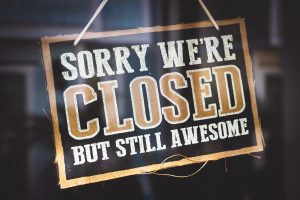Posts Categorized: COVID-19 strategies
$2,000 grant to help you take control


A new state government grants recognises that whilst many small businesses have survived covid lockdowns they still have lingering needs and require further assistance to ensure:-
- Profitability
- Sufficient cash flow
- Have greater insight over their business
- Better plan for the future (and do so in light of new business norms and changing customer behaviour).
To enable and encourage this, a Specialist Advice Pathways Program grant of $2,000 will be paid to enable the receipt of qualified professional support.
So what are the qualifying criteria to receive the grant?
- Be a company, trust (with a corporate trustee), partnership or individual.
- Have held an ABN at 1st July 2020.
- Being registered as an employer with Worksafe Victoria – that is have a WorkCover policy.
- Have between 1 and 19 full time equivalent employees (presumably at the time of application).
Sole traders and partnerships that don’t employ anyone are not eligible nor are trusts where an individual or individuals are trustees.
Isn’t this great – your business might qualify to receive $2,000 of funding for one or more of these fundamentally key activities:-
- Advice and analysis regarding the management of cash flow, preparation or cash flow budgets and projections
- Profitability analysis and formulation of financial management and/or operational business strategies
- Strategic analysis to revise business planning and/or governance arrangements
- Advice regarding the management of debts and liabilities
- Advice and/or representation regarding commercial agreement contract terms (i.e. commercial leases or commercial supply contracts).
So who can provide these services?
We can (except the last which is legal)! A service provider needs to be a registered:-
- Accountant / tax agent
- Book-keeper
- Lawyer
As such, business coaches are excluded.
So how do you apply for the grant?
Unlike past government grants, we, as the qualified service provider, can’t apply on your behalf.
One must apply by 30th September – but like with past grants, applications will close earlier if the allocated funds are exhausted before then.
Applications will be assessed with a confirming approval email to be sent by the end of October.
It is important that we be involved with this process as:-
- It requires the ABN Registry to be correct for which we will need to check and possibly update (noting that with the ABN system being introduced in 2000, the registry appeared somewhere in the late 2000’s and many not have been updated)
- As the Qualified Service Provider, we need to prepare a service agreement. That agreement either needs to be attached to the application or its key contents set out in the application.
You will need to upload at least one identifying document. You will also need to include my professional membership details.
Other matters of note
- The services must be delivered by the end of January 2023.
- You will need to complete a statutory declaration as to the services provided.
- Payment is made in 2 lots – $1,000 within 20 days of acknowledging the successful application email and within 20 days of completing the final claim form.
- You will also be requested to complete a short survey.
- You will also be required to attest that all industrial relations obligations are being met – which include having evidence of having supplied all employers with the 11 national employment standards.
So what will be the cost of the services I require?
Well that will depend on:-
- How many of the first 4 stated services you require and
- The complexity of your business and
- The quality of your financial information.
We are building a matrix to determine the investment into attending to any of the qualifying services and provide you with the required service agreement.
Where do I register?
https://businessvic.secure.force.com/GrantsPortalLogin
Next steps
Alex Stewart is contacting existing clients to discuss their situation and how they will benefit from this grant. Unlike past state grants, Sam Della Bosca can’t apply on your behalf but she will guide applicants through the process.
By way of closing comment, please don’t let this opportunity slip by. Every small business should undertake these qualifying activities. And now that the troubling days of 2020 and 2021 are behind us, this gives you the chance to undertake proper planning for the future.
Worried about your cash flow?

Worried about your cash flow? It’s the number 1 concern at this time of year. And understandably so as cash flow is the oxygen that keeps any business running.
Cash flow concerns this year are a bit different.
Whilst some business have sold their socks off over the last 18 months, others have got by whilst others have struggled. Now that many businesses have been able to fully trade again, a Christmas holiday slowdown hasn’t exactly come at the right time for many.
It also appears as the ATO, who haven’t been chasing unpaid debts, now seemingly appears to be actively be chasing unpaid tax debts. And for those with tax debts unreported and unpaid for more than three months, there is particular concern as it has been said by liquidators that the ATO will use the Director Penalty Regime to assign and collect business tax debts from directors.
Not being able to pay wages and other expense sin January and February is what keeps small business owners awake at this time of year. And the problem is publicly available accounting software reports on the past. Some may now market cash flow forecasting but that is very short term and incomplete.
So what do you need to understand and control your cash flow?
- We can provide you with a number of tips gained form any years working with and advising a vast array of industries.
- We have a specialised cash flow tool that provides full 4 way forecasts.
So what should you do?
We invite you to a free 30 minute meeting in which we can again understanding of your situation and concerns and then explain ways in which we can help. You have nothing to lose and may end up sleeping better and enjoy Christmas.
The 5 key things to implement in 2022

Hard to be believe this year is almost over! It has been a tough year for many. But that said, the economy has performed surprisingly well, we have high vaccination rates and statements from our leaders that we are not going back into lockdown.
It seems as though we can relax over the Christmas break with a degree of calm.
The Christmas break is a great time to take a breath and re-asses your work and personal life.
But having started work on the back of the 1983 recession and worked through the ealry’90’s recession, not to mention the GFC, the 1997 Asian crisis and other such events, the effects of covid will play out for a couple of years yet. We are not out of the woods yet.
In light of the uncertain times that lie ahead, on Wednesday 12th January we will explore 5 key things to address and implement in 2022
- Re-evaluate how covid has changed your business and moreover how your business needs to adapt. In particular we will explore who is now your customer target base and how to find them.
- Amend your STP payroll reporting to not fall foul of Fair Work Australia obligations.
- Making a profit is the goal but the oxygen to a business is its cash flow. We will explore how to better manage and improve your cash flow.
- With a federal election looming, take up any advantage under existing tax laws.
- Being in business carries the risk of getting sued. We will examine key asset protection strategies to protect the wealth you have worked hard to generate and/or inherited.
You can reserve your place at this 45 minute webinar by clicking here
And as we are passionate about helping small business owners through these difficult times, we welcome your passing on this invitation to family, friend and business associates.
A stinging case for reviewing your asset protection planning

An over-riding goal of asset protection planning is to split personal wealth assets from business risks. A common strategy has therefore been to have the non-working non-risk spouse hold the family home in their name.
This strategy has worked well.
Until that is the recently decided case of the Commissioner of Taxation v Bosanac.
In this case, the Australian Taxation Office was successful in recovering tax debts of Mr Bosanac against the family home despite the fact that Mr Bosanac’s name was not listed on title. And it never was from the time the house was bought 15 years ago in 2006.
The key facts were:-
- The house deposit was paid from a joint bank account.
- The house was subsequently used as security for other loans.
- The couple lived in the house for 9 years until they separated. Thereafter the wife continued to live in the house.
- The husband subsequently used the house as security to fund share trading.
The Federal Court decided that on the basis of what they saw as objective facts, the property had always been held by both husband and wife. Moreover, it seems unlikely that the case will be appealed to the next and highest court, the High Court, as the presiding Federal Court relied on precedents from the High Court.
It is of great concern that a prime asset protection strategy may no longer be effective. Asset protection (including estate planning) is never a set and forget matter. And with so much economic harm inflicted by covid on small business around Australia solvency risks have increased, arguably greatly so for some.
Now is a great time to review your asset protection strategies. We welcome the opportunity to assist you and ensure that your family’s wealth is not left open to creditors.
State government assistance to the construction industry

Compensation is available to firms within the construction industry that were closed for the two weeks ended 4th October 2021. Payments are tiered according to payroll size.
The compensation program is called Business Costs Assistance Program Round Four – Construction.
So how does my business qualify:-
- Must have held an ABN as of 24th September 2021.
- Must have been registered for GST as of 24th September 2021.
- Have a payroll of less than $10,000,000.
- If your business employs, you must be registered with WorkCover.
- If your business doesn’t employ anyone, you must hold a WorkSafe Construction Induction Trading Card.
- You must operate within an eligible sector – click here to check your business.
- Your business must have incurred costs directly due to the lockdown and were not able to operate remotely.
- Your business must have been contracted to work within a lockdown municipality.
Costs directly incurred as a result of the lockdown include such outgoings:-
- Contract penalties
- Equipment rental
- Paid employee leave for staff who were prohibited from attending a work site.
Business that received any one of last year’s three rounds of the Business Support Fund and/or the Pay-roll Tax rebate/waiver can apply.
However, businesses do not qualify for round 4 if the received any one of:-
- Business Costs Assistance Program Round Two
- Business Costs Assistance Program Round Two – July Extension
- Small Business COVID Hardship Fund
Those businesses still awaiting the outcome of their application to those three programs can apply for Round 4. If successful under any of the four programs, they will be paid under the grant that pays the greatest amount.
The grant amount is tiered to payroll size:-
- $2,000 for non-employing businesses.
- $2,800 for employers with an annual payroll of less than $650,000.
- $5,600 for employers with an annual payroll between $650,000 and $3,000,000.
- $5,600 for employers with an annual payroll between $3,000,000 and $10,000,000.
Applications are to be processed within 10 business days with the program closing on 9th November or earlier of the allocated funds run out.
We welcome the opportunity to examine whether you qualify, answer any questions you may have or assist you with your application.
Does your businesses now qualify for rent relief?

Many Victoria businesses suffered through lockdown. But whilst it may have been tough from early August, many businesses did not see their turnover fall by more than 30% in a 3 month block to the end of September.
This was unfortunate as it meant rental relief could not be back-dated to 28th July.
But what seems to have been forgotten is that, with the three months ending 31st October being almost all in lockdown, there may have now been a greater than 30% fall in turnover. Such businesses would now qualify for rental relief until mid January 2022.
So is your business one that now qualifies?
- You can test yourself against the criteria as we set out in our blog https://www.mrsaccountants.com.au/rent-relief-2021/
- Or call us – we welcome your call as we are passionate about helping small business owners.
Relief for commercial landlords

Relief is available to those commercial landlords who have given rent relief under the 2021 revised Commercial Rent Relief Scheme.
Under that scheme landlords are required to provide the following relief to their tenants:-
-
A reduction in rent commensurate with the decline in the business’s turnover.
-
Half of that reduction is to be waived permanently.
-
The other half is to be paid on a deferred basis.
-
Not evict any tenant.
-
Not to charge any outgoings where the tenant can’t occupy the building.
-
Extend the lease on the same terms as the period of rent relief.
You can read more at – https://www.mrsaccountants.com.au/rent-relief-2021/
As part of this process, landlords are required to issue an acceptance letter.
To support landlords, the State Government has announced the following relief:-
-
A 25% Land Tax Relief (which is additional to any previous reduction).
-
A deferral of any residual Land Tax for the 2020 and 2021 years until 31st May 2022.
-
Small landlords who consequentially suffer hardship can receive up to $6,000 under the Commercial Hardship Fund #3. Small landlords are those with holdings of less than $3,000,000.
-
This grant can be increased to $10,000 where a landlord suffers acute hardship. Acute has been defined as where rent represents 70% or more of total gross income – with gross meaning income before deductions.
Applications close by 15th January 2022.
At the time of writing, we are still awaiting the revised Land Tax application form.
We will be in touch when the Land Tax applications open.
Statutory declaration for Victorian rent relief scheme
One of the requirements for the 2021 Victorian rent relief Scheme is for the tenant to provide a Statutory Declaration.
You can access a Victorian Statutory Declaration by clicking here.
And you can read more about the scheme at https://www.mrsaccountants.com.au/rent-relief-2021/
But please do so quickly as applications lodged before Friday result in the rent relief being back dated to 28th July. Any applications lodged after that date will only receive rent relief from the date of application.
Important actions to obtain Victorian Small Business Rent Relief

A new rent relief system is now open to Victorian small businesses.
Whilst it is similar to last year’s system, there are some important differences including:-
-
A tightened process (partly in light of the previous scheme relying on the fall in turnover as declared within the JobKeeper application).
-
Deemed acceptance of application for relief.
-
Mandatory re-assessment of rent relief (more later).
-
A two stage process.
What follows is a summary of the system and what you need to action; it is not a complete summary as that would cause this summary to lose clarity in favour of obscure scenarios not relevant to our clients. Please also keep in mind that there will no doubt be changes and clarifications to this system (of which we will keep you aware by blogs on our web page).
So what is the relief available where there has been a 30% or more fall in turnover?
-
A reduction in rent proportional to the extent that turnover has fallen.
-
Half of that reduction is to be waived; the other half is to be deferred (and this will be on top of any amount deferred from last year’s program).
-
No rent increases during the period of relief (being from 28th July 2021 or latter qualifying date until 15th January 2022).
-
Tenants cannot be evicted.
What is turnover?
-
Turnover is your income – sales, fees, commissions etc.
-
Turnover is measured as per your GST method. That will be cash for the vast majority of small businesses.
Tips and traps in respect of calculating turnover include
-
Make sure you test within your accounting software on your GST basis.
-
State covid grants are included.
-
Unlike the prior scheme, supplies within a GST group are now included.
-
Exclude input taxed supplies.
-
Includes GST free supplies.
-
For those on accrual for GST purposes, bad debts do not reduce turnover but discounts and credits do.
-
Beware of adjustment events and insurance settlements.
For most it should be relatively straight forward. For others turnover for this scheme will not be the same as reported at G1 on a BAS.
What is the qualifying test?
-
For business trading before 1st Aril 2019 – compare three whole consecutive calendar months from 1st April 2021 to 30th September 2021 to the same three months in 2019.
-
For business that started trading between 1st Aril 2019 and 31st March 2020 – compare three whole consecutive calendar months from 1st April 2021 to 30th September 2021 to the average monthly turnover to 31st March 2020.
-
For business that started trading between 1st Aril 2020 and 31st March 2021 – compare three whole consecutive calendar months from 1st April 2021 to 30th September 2021 to the average monthly turnover to 31st July 2021.
-
For business that started trading after 1st April 2021 – parties must negotiate in good faith.
-
There are again alternative tests (which we briefly summarise as applying where natural disasters or sole trader unable to work).
Other key features of the system
-
Must be running a small business (turnover under $50,000,000).
-
Non for profits and charities also qualify.
-
Must have a lease agreement.
-
A business need not be registered for GST.
-
Landlords are under an obligation to consider waiving outgoings during the relief period if the tenant is unable to occupy the property.
-
A landlord must offer an extension to the lease term proportional to the period of rent relief.
What are the two steps I must satisfy in order to obtain rent relief?
-
Lodge an application.
-
Then provide
supporting evidence within 14 days of lodging the application.
The Victorian Small Business Commission has provided two letters with which to lodge an application
- A letter for both applying and submitting required information – you can access it by clicking here.
- A letter with which to make the initial application and a further letter with which to subsequently supply the required information – you can access it by clicking here.
We are unable to link the documents at this time so please ask us for a copy.
One or more of the following items of information need to be supplied
-
Extracts from accounting records.
-
Bank statements.
-
A BAS or BAS’s that cover the period
-
Statement from a practising accountant.
-
AND a statutory declaration signed by yourself attesting that the information provided is true.
It is your choice as to what you release so you can rightly elect not to release one of these items if you consider it too sensitive. Furthermore, you are not under any obligation to release financial statements if requested.
A major change within this scheme is the introduction of a mandatory re-assessment. By 31st October the tenant and landlord must check in and assess whether circumstances have changed (such as ending or extending lockdown) and adjust the rent relief accordingly.
Of utmost importance is the need to apply by 30th September to have any relief back dated to 28th July. Applications after that date will only receive relief from the date of application.
Two words of warning
-
So what if you have only suffered a decline in turnover since July or August? You might not have qualified yet but may well do so by the end of this month. Perhaps it is best to apply to ensure you are entitled for back dated relief should you qualify. If it turns out that you don’t qualify then you can withdraw your application and/or fail to supply the required information meaning that your claim is annulled.
-
If this system proves to be like JobKeeper, then we can expect modifications and clarifications. Please return to our web page blogs for updates.
Please note that we will shortly set out the relief available to landlords.
Who is to apply?
-
As an accountant and tax agent, we are registered at act on your behalf with bodies such as the ATO and ASIC. We don’t though have any dealings, association or authority with your landlord. So as with last year’s rent relief system¸ we won’t be acting on your behalf unless you instruct us to do so and notify your landlord of our engagement. If we do assist you with one or more parts of this process you will still need to sign a statutory declaration.
Please do act promptly to ensure any current entitlement is secured by the cut off date of 30th September.
We welcome any question you may have.
The rundown on the expanded covid business grants

In a joint press release yesterday, the state and federal governments announced an expansion to the state covid business grants.
There is no across the board support. Rather the payments to existing covid business grants will be increased.
The key takeaways are as follows.
Small Business Covid Hardship Grant
-
The one-off payment entitlement has been increased from $14,000 to $20,000.
-
The press release stated that the application deadline of this coming Friday would be extended – but then went on to say that applications will close on 10th September! The state web page still states 10th September (or until allocated funds run out). Whatever it is the sooner the application goes in the sooner it gets paid. And that all said, if the deadline is extended then more business will qualify.
-
The program was designed to cover those who “slipped through the cracks” but many small business that are suffering miss out on this as there turnover has not fallen by more than 70% over a two week period and done so due to covid. That said, if you pay your GST on cash basis, don’t assume you don’t qualify. One new client we picked up during the week was told by their accountant that they did not qualify – but they genuinely did!
Business Costs Assistance Program
- Businesses that are closed and appear on set list of industries can receive weekly payments of either $2,800, $5,600 or $8,400 (depending on payroll size). The funds are paid to cover the cost of wages, rent, utilities, etc.
Licensed Hospitality Venue Fund
- Payments are being automatically made to those previous recipients.
Covid Disaster Payment
-
Employees who have lost hours of work can receive a weekly payment under this federal payment.
-
It can also be claimed by micro businesses that do not qualify for the Hardship Grant.
In these difficult and uncertain times we welcome any question you may have.
In the meantime, we will continue to work through our client base to make sure all small businesses receive the grants they are entitled to.
And may I take the opportunity to remind you to support your local small businesses. Not only do they employ two-thirds of the workforce, they are the ones who support all the local sporting clubs, school fetes and the like. Now is the time to return the favour!
